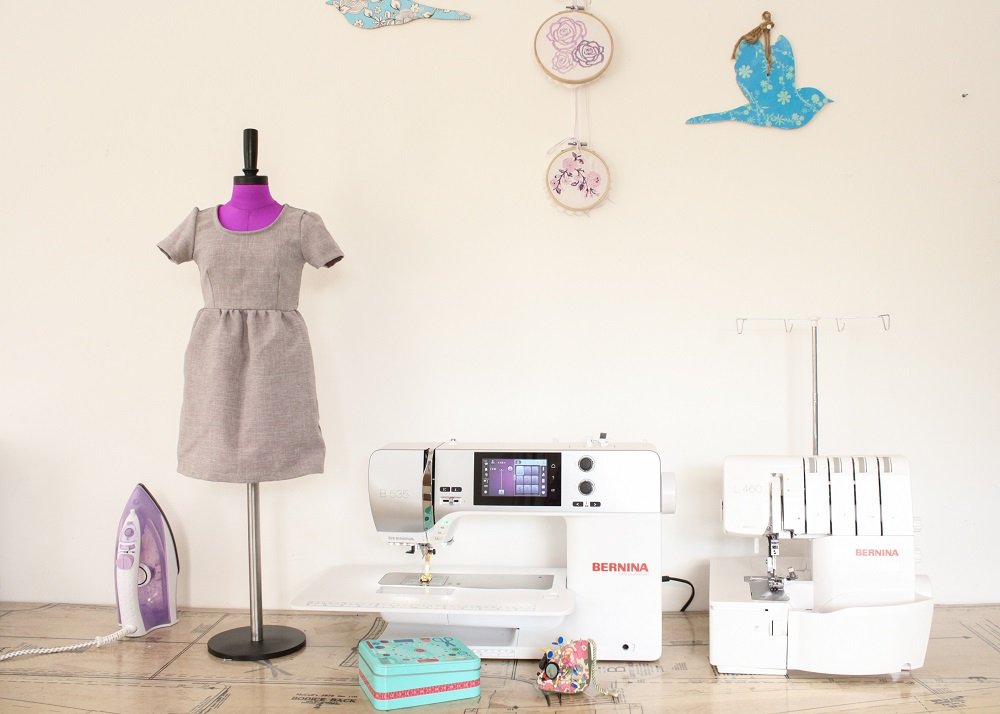
I recently got a half scale mannequin from a local dress form & mannequin manufacturer.
I love it so much, especially the gorgeous colour!
Like most half scale mannequins, this one is correctly proportioned to a women’s full scale size 10.
Other than looking cute in your sewing room, you may wonder what is the point of such a small mannequin?
Teaching aids

Firstly, they are great teaching aids. They are less daunting for beginners to sew as they
come together quickly and are easy to work with. My students also love the novelty of making cute mini outfits.
Draping & testing techniques

As a designer, I find it helpful when trying out new designs and techniques. I don’t always want to spend a lot of money buying expensive fabric just to try out something. While working with a half scale mannequin, I only need half the amount of fabric and can often use bits of fabric left over from other projects.
Testing Patterns
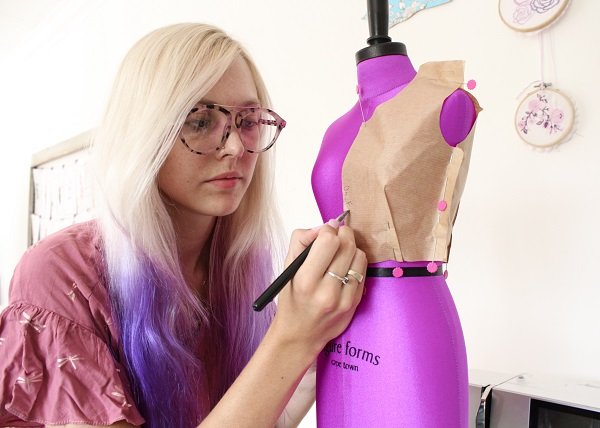
It is also great for testing out sewing patterns before committing to sewing a whole garment.
This is helpful if you are still getting to grips with sewing or are unsure whether or not you like a pattern
Follow these steps if you have a full scale pdf pattern that you would like to make in to a half scale pattern.
For this example, I used the free downloadable Orla Dress A4 pdf Pattern by French Navy
(The top I am wearing in this blog is also a pattern by French Navy, the Morningside Shirt.)
What will be needed:
- A4 pdf pattern
- Printer
- Paper Scissors
- Tape
- Pattern Paper
- Pencil & Pen
- Ruler
- Optional: Tracing wheel
Steps

- In terms of which size and how much fabric is required, refer to the pattern’s instructions.
Usually the amount of fabric required for the half scale would be half the amount suggested by the pattern for the full scale garment.
For example, this pattern calls for 145cm of 150cm wide fabric so I could use 72.5cm of 150cm wide fabric and actually be able to cut 2 half scale dresses.
Remember to down scale the haberdashery as well. Example, the zip would need to be 20cm.
With regards to what size to use, refer to the size chart.
My mannequin’s measurements are Bust: 45, Waist: 34cm, Hips: 45.
To see what size it would be full scale, I just double the measurements:
Bust: 90, Waist: 68cm, Hips: 90.
So the size I need to use for this pattern is the Medium.

- When you go to print the pattern, under the Size section, change the scale from 100% to 50%.
Select just the pages with the pattern (for this pattern they are pages 6-25)
If at all possible, try fit multiple pages on a page to reduce paper waste. Some printers may not offer this option.

- Assemble the pattern, matching up all the pages.

- Trace off the pattern pieces according to your preferred method.
I like to use thin brown paper. I place it on top of the pattern and trace the pattern pieces with a pencil.

- As your pattern is half the size it was originally, the seam allowances will be too.
Refer to your pattern’s instructions to see what the seam allowance should be and add to your half scale pattern to make them correct. You can of course work with the half scale seam allowance but I find them to be too narrow and cause me frustration.
For example, the seam allowance for the Orla dress pattern is 1cm. Now that the pattern is half scale, the seam allowance is 0.5cm. I feel that is a bit small to work with, so I added 0.5cm to the seam allowance to make it 1cm.
The dress has a centre back zip and I prefer to have a seam allowance of 1.5cm when working with zips. So I added 1cm to the half scale pattern’s 0.5cm seam allowance at the centre back to make it 1.5cm. When working on the full scale version of this garment I would add 0.5cm to the existing 1cm seam allowance to also make it 1.5cm.
Remember to do the same for the hems.

- If you added to the seam allowance, draw around the new lines in pen and erase the old lines to prevent confusion. Remember to copy the necessary information from the original pattern.
Now the pattern can be cut out and used.
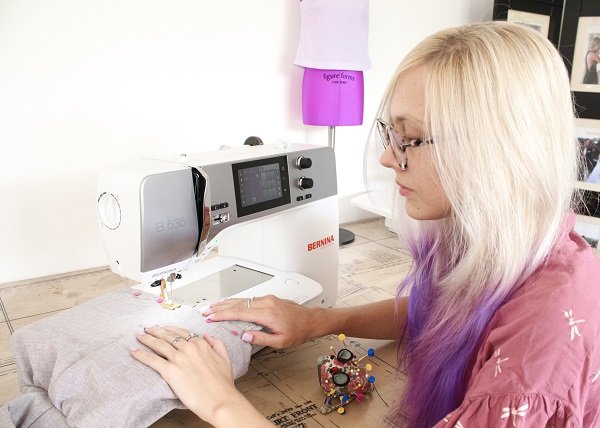
I am so enjoying sewing up mini garments.
It is a great way to try out different decorative stitches and small scale embroidery designs with my B535.
I am trying out new sewing techniques with my machine now too. By not limiting myself to sewing my usual garments, I feel like my creativity has opened up and allowed me to try everything my B535 has to offer. And there is a lot that it offers!
I have yet to find a fabric that this machine struggles to sew. I use slippery and delicate fabrics like satin and chiffon a lot while creating my client’s evening dresses. Once I have draped the design on my half scale mannequin to help me visualize, I use my B535 to bring the custom garment to life.
 BERNINA Corporate Blog -
BERNINA Corporate Blog -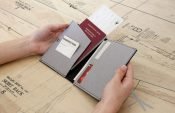


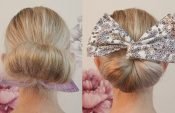
Hi, I just stumbled onto your article from going down rabbit holes on Pinterest and I have two questions. One, what is your form made from and is it fully pinnable? I did see where it’s from in the other questions but couldn’t find much about them on their site so I’ll have to check back there. Two, which software program are you using for the patterns? I’m shopping all the different forms in regards to cost and features before I buy one. Thanks for any help!Kim B.
Hi Kim
Here’s the link to the half scale dressform The are usually quick to respond if you pop them an email [email protected]
The form is pinnable, however the dress form is somewhat firm/not squishy so you can put pins in it put pins in it but its not soft like a pin cushion.
I usually self draft patterns but if I download ready made pdf patterns (like above) I scale it down when I print (see step 2). My laptop opens pdf in Adobe Acrobat Reader.
Hope that helps
I also think half scale is very useful!I usually buy half scale dress form through DeLiang Dress Forms. I think deliang’s dress form is of very good quality and I highly recommend it!!!Where do you usually buy it?
Ah great, thank you for the recommendation.
My half scale dress form is from a South African company called Figure Forms.
Their regular sized dress forms are widely used in our local fashion industry.
Hi just wondering where you got your half scale mannequin please??
Hi Leigh
I got my half scale mannequin from Figure Forms (Cape Town, South Africa)
Hope that helps 🙂
I recommend deliang dress Forms!!
Great info! Which manufacturer did you purchase your 1/2 scale from?
Thank you 🙂
This 1/2 scale dress form is from Figure Forms, Cape Town.
How much was the half scale mannequin
Hi Alex
I am not sure as I was gifted this one.However, here are the details of the company if you want to contact them and ask:
http://www.figureforms.co.za/contact
Figure Forms are based in Cape Town, South Africa but according to their website, offer global shipping.
Hope that helps